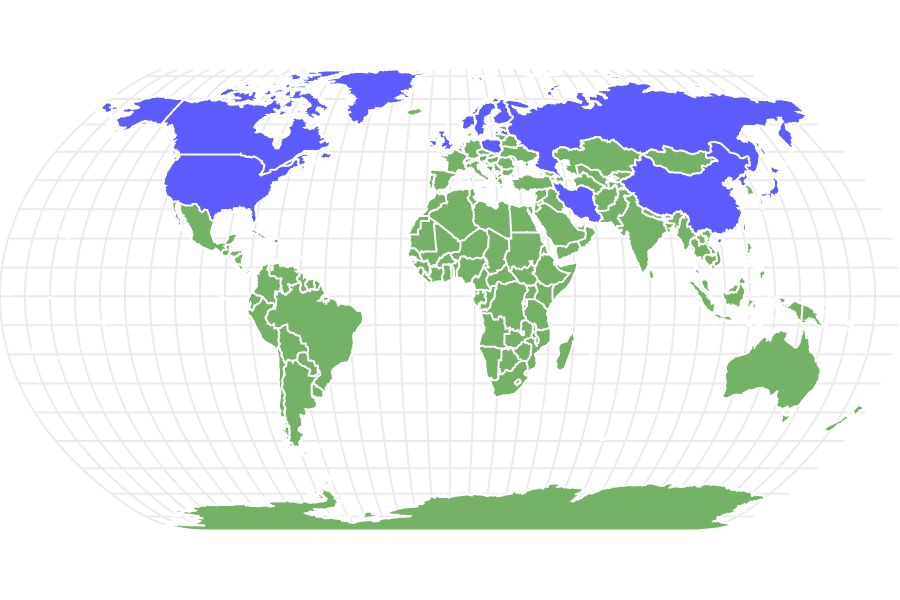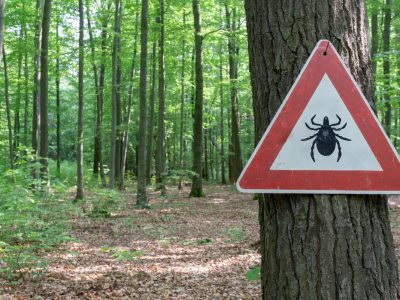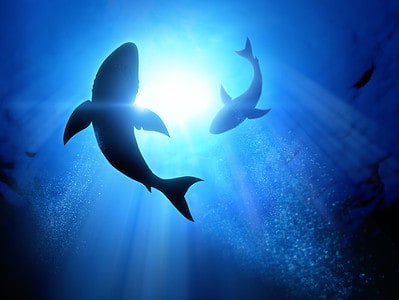Pink Salmon
Oncorhynchus gorbuscha
They die after they spawn!
Advertisement
Pink Salmon Scientific Classification
- Kingdom
- Animalia
- Phylum
- Chordata
- Class
- Actinopterygii
- Order
- Salmoniformes
- Family
- Salmonidae
- Genus
- Oncorhynchus
- Scientific Name
- Oncorhynchus gorbuscha
Read our Complete Guide to Classification of Animals.
Pink Salmon Conservation Status
Pink Salmon Facts
- Prey
- Small fish, crustaceans like shrimp and krill, squid, zooplankton, aquatic insects
- Name Of Young
- Fry
- Group Behavior
- School
- Fun Fact
- They die after they spawn!
- Biggest Threat
- Overfishing
- Most Distinctive Feature
- Pink flesh
- Other Name(s)
- Humpback salmon, humpy, gorbusch, haddo, holia
- Incubation Period
- 5-8 months
- Average Spawn Size
- 1,200-1,800 eggs
- Predators
- Humans, other fish (including other Pacific salmon and Pacific halibut), sharks, marine mammals like humpback whales, bears, wolves, otters, small mammals, bald eagles, coastal seabirds
- Diet
- Carnivore
- Number Of Species
- 1
- Slogan
- The smallest of the North American salmon
Pink Salmon Physical Characteristics
- Color
- Red
- Blue
- White
- Green
- Silver
- Skin Type
- Scales
- Top Speed
- 2.5 mph
- Age of Sexual Maturity
- 2 years
- Venomous
- No
- Aggression
- Medium
View all of the Pink Salmon images!
The pink salmon (Oncorhynchus gorbuscha) is an anadromous fish that thrives in the cold waters of the North Pacific and Arctic Oceans. Alternate names for this species include humpback salmon, humpy, gorbusch, haddo, and holia. Its defining characteristic is its ability to swim for many miles upstream to spawn, after which it dies. Though these fish are carnivores, they are small enough that they have a number of predators. They are popular with both recreational fishermen and commercial fisheries. Despite this, however, their North Pacific populations are so large that they pose a threat to similar, competing species.
3 Pink Salmon Facts
- Pink salmon don’t look predominately pink: Though breeding members of this species have red sides, these fish are mostly silver with bluish or greenish tones. Their name comes from the pink color of their flesh, not their scales. Salmon get their pink color from the crustaceans in their diet like shrimp and krill. The more crustaceans they eat, the pinker the salmon.
- Pink salmon die after they spawn: These fish use up all their energy reserves to swim upriver and build nests. They stop eating after entering fresh water, leaving themselves with no fuel for the return journey. Eventually, they waste away.
- The smallest of the North American Pacific salmon: Despite their amazing ability to swim miles upstream to spawn, these fish are not large. The biggest individuals only measure 30 inches and weigh no more than 15 pounds.
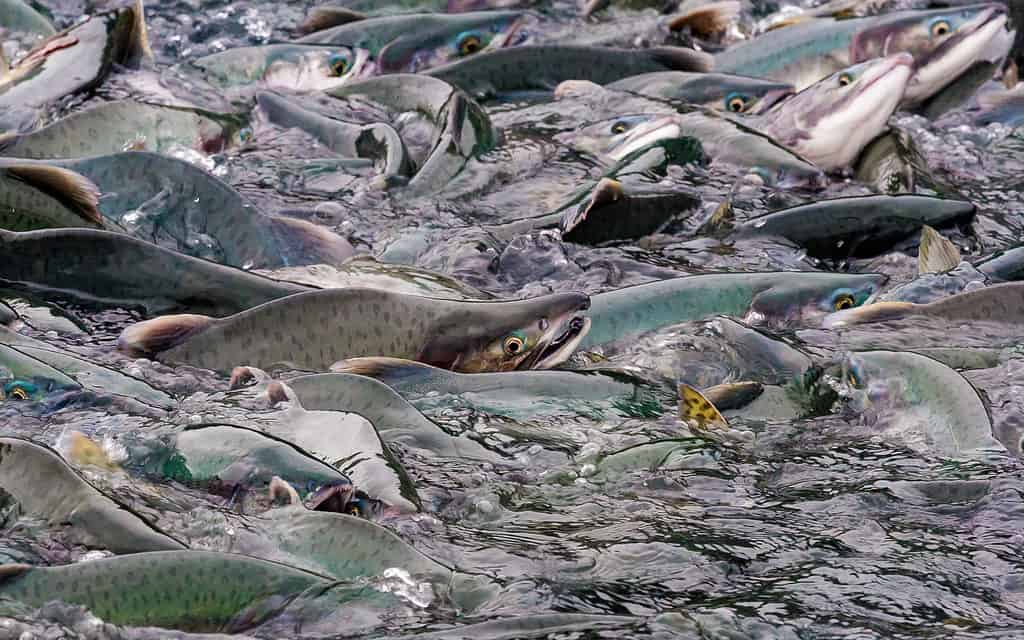
Pink salmon get their name from the pink color of their flesh, not their scales.
©Troutnut/Shutterstock.com
Pink Salmon Classification and Scientific Name
Pink salmon’s scientific name is Oncorhynchus gorbuscha. Oncorhynchus which comes from the Greek words for “nail” and “snout”. Gorbuscha is the Russian name for this fish, which belongs to the superclass Osteichthyes (the bony fishes) and the class Actinopterygii and within this class, it falls into the order Salmoniformes. Its family, Salmonidae, contains 66 species in 11 genera. The genus Oncorhynchus comprises all species of Pacific salmon and Pacific trout.
Pink Salmon Appearance
Despite their name, wild pink salmon do not have predominately pink scales; rather, the flesh underneath is pink. Breeding males have red sides with greenish-brown blotches and dark backs. Breeding females appear similar; however, their coloration is duller than that of males. Both sexes feature a steel blue or blue-green dorsum with silver sides and a white belly, though their color fades to a pale grey during spawning.
These fish have six types of fins: an adipose fin, a dorsal fin, a caudal fin, pelvic fins, an anal fin and pectoral fins. The adipose and dorsal fins as well as the dorsal region sport oval spots. During spawning, males develop a hump on their backs, earning the species the nickname “humpback salmon” or “humpies.”
This species is the smallest of the North American Pacific salmon. Individuals typically weigh between 3.5 and five pounds and measure 20-25 inches long. The biggest individual on record weighed 15 pounds and measured 30 inches in length.
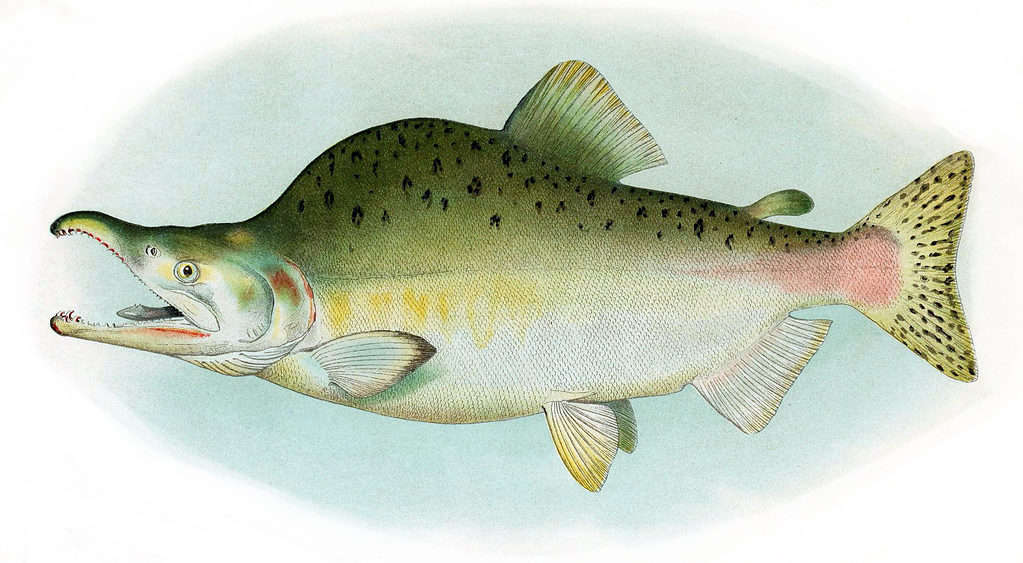
Breeding males have greenish-brown blotches and dark backs and during spawning develop a hump earning the nickname “humpback salmon”.
©A. Hoen and Co., Public domain, via Wikimedia Commons – Original / License
Pink Salmon Distribution, Population, and Habitat
In North America, pink salmon inhabit the North Pacific and Arctic Oceans as well as nearby seas like the Bering Sea. They are native to the United States (including Alaska), Canada, Russia, China, Japan, North Korea, and the Kuril Islands. Humans have introduced them to a number of areas including Greenland, Iceland, the United Kingdom, Sweden, Poland, Norway, Latvia, Finland, and Iran. Within North America, this species ranges from the Mackenzie River delta in Canada’s Northwest Territories to Washington, Oregon, and California’s Sacramento River drainage and La Jolla coast.
These fish are anadromous, moving inland from the ocean to spawn in rivers and streams. As such, they thrive in both saltwater and freshwater environments. These fish prefer the cold temperatures of northern waters, living at depths of up to 820 feet.
Though scientists have not evaluated the total population of this species worldwide, a 2018 study found that there are excessive numbers in the North Pacific, up to 665 million adults. Evidence suggests that this is interfering with other species’ ability to thrive. As of 2022, the IUCN has not evaluated the pink salmon to determine its conservation status. NOAA features a 2021 report indicating that coho salmon stocks in Alaska (which include pink salmon) are not in danger of overfishing, though they have no data for stocks along the West Coast. According to the WWF, potential threats to this species include poaching, habitat destruction, river blockages, overharvesting, and climate change. For a list of endangered animals, see this article.
Pink Salmon Evolution and History
Scientists are unsure whether the ancient ancestors of pink salmon lived in saltwater or freshwater. However, between 95 and 65 million years ago (middle to late Cretaceous Period), members of Salmonidae became autotetraploids with twice the chromosome arms and twice the DNA as related species. This may have resulted in accelerated evolution.
By the early Miocene (15-20 million years ago), the genus Oncorhynchus (Pacific salmon) split from Salmo (Atlantic salmon) within the family Salmonidae. The cooling Arctic Ocean may have driven this adaptation. As the Miocene progressed, Oncorhynchus continued to speciate. By 6 MA, all extant species existed in some form. The greater diversity of Oncorhynchus, as opposed to Salmo, may be due to the more active geologic history in northwestern North America, which produced more diverse habitats.
Although there are relatively few fossils of Pacific salmon from the Pleistocene (11,700 to 2.5 million years ago), it is likely that the glacial disruptions and landscape alterations inspired more evolutionary changes within the genus and within individual species. Repeated glaciation, megafloods, annual floods, volcanic activity, and landslides all caused salmon species to either adapt or die out across the Pacific Northwest. Within the Holocene (the current epoch), smaller but frequent events like floods and erosion continue to force species like pink salmon to adapt.
Of all the extant species within Salmonidae, pink and coho salmon have the least genetic or evolutionary flexibility. In the future, it is possible that nonmigratory subspecies of salmon will fare better than migratory types due to increasing manmade barriers in rivers and streams.
Pink Salmon Predators and Prey
Pink salmon may be carnivores, but they are far from the top of the food chain. Their prey tends to be small while they themselves face threats from a number of larger predators.
What Do Pink Salmon Eat?
These fish feed exclusively on animal matter. They eat small fish, crustaceans, squid, and zooplankton. They also occasionally prey on aquatic insects.
What Eats Pink Salmon?
This species’ predators vary according to their environment and the age of the fish. In freshwater, eggs, alevins, and fry are at risk from fish, birds and small mammals. Adults face predation from bears, wolves, river otters, and bald eagles as well as other fish (including Pacific salmon) and coastal seabirds which hunt juveniles. Sharks, fish like Pacific halibut, and marine mammals like humpback whales prey on adults. Humans remain a major source of predation.

Pink salmon adults face predation from a variety of animals such as bears.
©iStock.com/Mark Kostich
Pink Salmon Reproduction and Lifespan
Though they begin life in fresh water, pink salmon fry quickly migrate to the ocean where they live most of their lives. With an intense feeding schedule, they grow more rapidly than most Pacific salmon species. They only leave their marine environment in their second year of life to spawn. When the time comes, they return to the same river or stream where they were born, typically within 30 miles of the river estuary. Spawning occurs any time from June to October.
In preparation for spawning, males develop a hump on their backs and large, hooked teeth on both jaws. Females lie on their sides and use their tails to dig a redd (depression) while the male fends off competitors. Then both the male and the female descend into the redd. After opening their mouths and vibrating, the female releases eggs while the male releases milt (sperm). Being polyandrous, females may mate with several males. They then lay between 1,200 and 1,800 eggs.
The female stays and defends the redd until she dies, typically within two weeks. The eggs hatch within five to eight months after incubating during the winter and make their way downstream to the ocean. They remain there for 16-18 months until they are mature enough to return and spawn.
All pink salmon die after they spawn. This is because they use up all their energy swimming upstream and mating. After they enter fresh water, they generally stop eating, which means they lack the fuel to make it back to the ocean. They eventually waste away and die. Given their spawning habits, most individuals live only two years. However, the oldest recorded individual lived to be three years old.

All pink salmon die after they spawn because they use up all their energy swimming upstream and mating.
©COULANGES/Shutterstock.com
Pink Salmon in Fishing and Cooking
Pink salmon are popular fish in both recreational and commercial fishing. According to NOAA, the worldwide commercial harvest in 2021 came to 453.6 million pounds valued at $173.4 million. Alaska fisheries yield most of the harvest in the United States. The West Coast, primarily Washington, yields a small portion of the annual harvest. Fisheries use gillnets, reef nets as well as purse seines to catch this species with little bycatch or impact on the ocean floor.
Though this species is too small to draw the attention of most sport fishermen, recreational anglers like it for its mild flavor and aggression. It is legal to catch these fish in most areas; however, both Alaska and the West Coast have varying regulations. When it comes to bait, pink lures have the best chance of success.
There are a number of ways to prepare this fish including baking, grilling, roasting, steaming, frying, or poaching. This garlic butter baked salmon recipe received high reviews; you can also check out this guide for five ways to prepare pink salmon. Alternately, see this Global News article for expert marinades, rubs, and sauces.
The flesh of this species is pink and lean. A 100-gram serving has approximately 116 calories, 3.5 grams of fat, and 19.9 grams of protein.
Related Animals
View all 192 animals that start with PPink Salmon FAQs (Frequently Asked Questions)
Are pink salmon pink?
Pink salmon are mostly silver with bluish or greenish tints, though breeding individuals have red sides.
Where are pink salmon found?
Pink salmon inhabit the Northern Pacific and Arctic Oceans, predominately along the West Coast and the shores of Alaska. They are also native to parts of Canada, Russia, China, Japan, North Korea, and the Kuril Islands.
Can you eat pink salmon?
Pink salmon are good to eat with a mild, pleasant flavor.
How big are pink salmon?
Pink salmon typically weigh between 3.5 and five pounds with an average length of 20-25 inches. The largest salmon on record weighed 15 pounds and measured 30 inches.
Thank you for reading! Have some feedback for us? Contact the AZ Animals editorial team.
Sources
- Fish Base / Accessed December 13, 2022
- California Academy of Sciences / Accessed December 13, 2022
- NOAA Fisheries / Accessed December 13, 2022
- https://www.adfg.alaska.gov/index.cfm?adfg=pinksalmon.main / Accessed December 13, 2022
- Phys.org / Accessed December 13, 2022
- WWF / Accessed December 13, 2022
- National Library of Medicine / Accessed December 13, 2022
- Seafood Source / Accessed December 13, 2022
- Little Spice Jar / Accessed December 13, 2022
- Global News / Accessed December 13, 2022
- Kitsilano.ca / Accessed December 13, 2022

